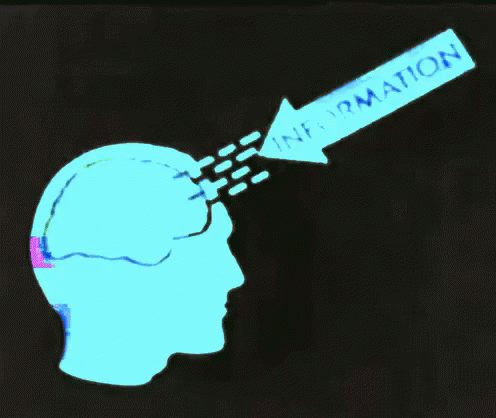Effective Tips: How to Make a Difficult Decision
-
Yuri Seleznev
Copywriter Elbuz
Have you ever wondered how your life would be different if you boldly made decisions despite fear and doubt? Today you will learn how to harness this power. Step by step. Without concrete steps, any strategy will remain just a dream. Ivan, a fabulous business consultant, once said: “Only by moving forward will you gain the power of decisions.” It is natural that his company has become one of the best in its segment. The techniques described in this article will help you make difficult decisions easier and more confident. Your life can change for the better today!

Glossary
- 📚 SWOT Analysis: A strategic planning method that evaluates Strengths ), Weaknesses, Opportunities and Threats in a project or solution.
- 🔍 If-Then Method: A technique that considers different scenarios (“if” one thing happens event "that" it will lead to a certain outcome) to predict the consequences of a choice.
- ⏰ Rule 10/10/10: An approach to decision making that involves thinking about how a decision will affect you in 10 minutes, 10 months and 10 years.
- 💡 Option Analysis: The process of considering all possible choices before making a final decision.
- 🌏 Information Gathering: Finding and obtaining additional data and facts to better understand a situation and make more informed choices.
- 🤔 Elimination: A technique whereby the least attractive or suitable options are eliminated one by one to narrow down the choice and make the process easier decision making.
- 🎯 Stress Management: A set of techniques and strategies aimed at reducing stress and anxiety so you can make better decisions .
- 🔄 Deadline method: A decision situation where you have a limited, often very short, time to make a choice (e.g. , 15 minutes), which sometimes helps you decide faster.
- ⚖️ Act according to your conscience: An approach to decision making based on the individual's moral and ethical beliefs, as well as internal sense of right and wrong.
When to fire an employee - and when to give one last chance
The process of firing an employee always causes me a lot of internal contradictions. I have faced such decisions more than once, and each time it has been a difficult choice. What to do if an employee constantly makes mistakes, shows no interest in work, but as a person is a completely pleasant person? I immediately remember an incident from my practice. 
🎯 Fire or motivate?
Once upon a time there was an employee on my team who was constantly late for work and periodically neglected his duties. At the beginning, I tried to find the reason for his behavior and help him improve his work. We had regular conversations, I gave him the opportunity to improve, and offered additional training programs. But over time, it became clear that it was not a lack of qualifications, but a lack of motivation. And that’s when I decided to fire him.
Why did I decide to quit?
- 🗣 After talking with other colleagues, it turned out that his behavior had a negative impact on team spirit.
- 📉 This employee’s constant mistakes led to the loss of clients and profits.
- ⚖ I tried all the motivation methods, but nothing changed.
I couldn’t shake the feeling of injustice - after all, this is a person who also has his own problems. But guided by the fact that I am responsible for the entire team, I made a difficult decision based on objective factors.
⚜️ What to do if the situation repeats itself?
If you are faced with a similar situation, I would suggest the following:
- 🔍 Analyze the behavior of employee: Perhaps the reason for his ineffectiveness lies in personal problems or lack of experience.
- 💬 Open conversation: Discuss with him the possibilities of improving his work, offer help.
- 🚀 Set a time frame for improvement: Give the employee a chance to prove they can do better, but set clear deadlines .
👥 My experience has shown:
- 🌟 If you see effort on the employee's part and noticeable improvement, it may be worth giving him another chance.
- 🚫 Otherwise, in order not to lose the morale of the team and not reduce overall productivity, dismissal would be a more reasonable step.
Real life example:
One day a young specialist joined us, who at times simply “couldn’t pull it off.” I watched his development, and when I realized that his potential was much greater than his demonstrated skills, we held several training sessions and gave him a second chance. This turned out to be the right move, and the employee soon became a valuable member of our team.

What to consider?
- 📚 Regularly train and motivate employees.
- 🧑🤝🧑 Monitor their psychological state.
- 💼 Maintain a balance between loyalty and professionalism.
⏩ The most important thing is to determine what is best for your team's overall performance.
I believe the following should be considered: It is important to evaluate the employee's aspirations and efforts and make decisions based on objective data.
☑ Review of best practices:
| Things to do | Things to do no need to do |
|---|---|
| Communicate openly | Postpone decisions |
| Give chances for improvement | Ignore problems |
| Evaluate contributions | Show only loyalty |
To sum up this topic, I I want to emphasize how important it is to be able to make difficult decisions and how to overcome stressful situations in the process. Firing an employee is one of those moments that requires common sense and a clear plan of action.
Method number 1. Using Cool Reason
When faced with a difficult decision, I always try to turn off my emotions and use reason alone. It is important to calm down and begin to analyze the situation objectively, without unnecessary feelings.
One of my projects involves making important financial decisions for a social enterprise. When the crisis came and we suffered losses, emotions overwhelmed me. But I knew that impulsive and thoughtless actions could lead to serious consequences. I took a break to completely calm down before I began to analyze the current situation.

The following techniques helped me for this:
Emotion Management Techniques
☕ Relaxing Chamomile Tea: A cup of chamomile tea helped relieve nervous tension.
🛁 Taking a bath: A warm bath with essential oils (like lavender) was wonderful for calming my nerves.
🌬️ Breathing technique: I learned the correct deep slow breathing technique, which involved ten long inhalations and exhalations.
These methods helped me release tension and allowed me to objectively analyze the situation without emotional blockages . For example, in a difficult financial situation, I was able to decide to reorganize budgets, suspend unnecessary projects and attract additional funds from investors.
Case Study
When I first started my career, I was responsible for a difficult decision regarding the direction of the company's future development . At that moment, I was filled with doubts and fears, but by taking deep breaths and properly organizing my time for analysis, I found the right solution. This decision subsequently led to the company's growth and significant improvements in its financial position.
Best practices
| Helpful Steps | Shouldn't be |
|---|---|
| Relaxing chamomile tea | Action at the peak of emotions |
| Taking a bath | Impulsive decisions |
| Using deep breathing techniques | Neglecting time for analysis |
| Analysis of available data | Ignoring negative consequences |
Also, I advise you to find time to relax while making difficult decisions. Proper management of your feelings allows you to minimize stress and avoid irreparable mistakes. If you strive to make effective and thoughtful decisions, I am confident that using these techniques will be beneficial for you.
Don't be afraid to act smart and use every available means to make better decisions.

Believe in yourself and don't hesitate to use this advice to make decisions with confidence and calm.
Method number 2. Go Deeper with Information Gathering
To make difficult decisions with confidence, it's important to dig deep into information gathering. And here's how I did it using an example of a real situation. I was once faced with the need to take out a loan to develop my business. Naturally, I was tormented by doubts: will I be able to pay it off, what will the interest be, is there a possibility of debt restructuring? With limited information, many begin to panic. Therefore, I sincerely recommend not to go this route.

Do your research
👨🏫 Contact the experts:
For me, the first step was contacting the bank. I went to the bank's website and did some initial research to get a basic understanding of the lending terms. Next, to go deeper, I made an appointment with a financial advisor. This allowed us not only to hear the information directly, but also to ask all the questions we were interested in.
👨💻 Use online resources:
And of course, I looked at a whole series of reviews on specific review sites and forums. After all, who knows better about the nuances of lending than those who have already walked this path? The reviews described the conditions, some shared positive results, while others described difficulties and how they were overcome. This gave me a pretty good idea of the pros and cons and helped me understand what to look for.
Collect Data and Analyze
I think it's important to emphasize that information is power. And the possibilities for obtaining it in our time are literally endless.

📊 Use statistics and analytics:
After meeting with the consultant and analyzing the feedback, I turned to statistics. For example, data on interest rates and market trends. This allowed me to compare the information received and find the best deals. Statistics are a reliable advisor that helps you make informed decisions.
📋 Make your own plan:
I also recommend create your own action plan with a schedule of when and what you should do to gain a deeper understanding of the situation. Each step should include specific questions you will ask and what exactly you want to know.
"To make informed decisions, you need to approach information gathering as a critical component of the process. The more you know, the more confident you will become." — Financial consultant of ALLO company, Ilya Ivanchenko.
| Useful actions | Incorrect actions |
|---|---|
| 📚 Explore all available resources | ❌ Focus on only one point of view |
| 👨🏫 Communicate with experts | ❌ Ignore negative reviews |
| 📊 Analyze statistical data | ❌ Rely on outdated information |
Best practices for collecting information:
1. Planning: I would recommend making a clear plan of possible actions and following it. This will help you not to miss important points.
2. Diversity of sources: Don't limit yourself to one source of information. Use the Internet, consultations and reviews.
3. Data check: I am convinced that all the data you receive must be double-checked.
4. Share your findings: Discuss your findings with colleagues or friends. This will help you get an objective assessment.
As I dug deeper into gathering information, I was able to make confident lending choices knowing that all decisions were made based on a complete and accurate analysis of the situation. A similar principle can be applied to other difficult decisions in life.
Method number 3. Weigh Your Options
When faced with difficult decisions, I always try to consider all possible options, even those that seem insignificant at first glance. This process took time, but it lived up to expectations.

Here are some steps and examples that helped me:
📈 Brainstorm
When I was working on a sales growth project, I put together a team to brainstorm. We discussed all possible options, from the obvious to the most insignificant. No matter how crazy or unrealistic the idea seemed, we still included it on the list. The result was interesting: the most unexpected options became the beginning of major changes. I can say that brainstorming is a great tool that helps you see a problem from different angles.
🤝 Use trade-offs
One of the teams had an issue with an employee whose performance was in question. Instead of abruptly firing him, I decided to impose punitive damages and offered him a salary increase if he achieved specific goals. This not only retained the experienced employee, but also motivated him. In such cases, I always advise looking for compromises that can solve the problem more gently.
💡 Enter trial items
When expanding the assortment in the online store, I used the strategy of introducing trial items. We introduced several new products and observed customer reactions. Thanks to this, we were able to understand which new products are worth keeping and which ones are better to discard. This avoided unnecessary costs and risks. I strongly recommend introducing changes gradually to test their effectiveness without breaking the bank.
💬 Find investors
When my company needed additional financing, I considered not only the option of a bank loan, but also raising investors. I found an investor who not only provided funds, but also shared his experience and helped with strategic planning. I believe that finding partners and investors can be a less expensive and more rewarding solution.

📊 Weighing the pros and cons
I necessarily analyzed each option, weighing all the pros and cons. I am convinced that this allows you to make a more balanced and informed decision. One of the key tools I used was a summary list of advantages and disadvantages.
📅 Try different time perspectives
When faced with a choice between two major projects, I assessed their short-term and short-term perspectives. long terms. This helped me better understand which project would bring more benefits in the future. I recommend that you analyze decisions not only in the moment, but also in the context of several years.
💼 Consult the Experts
I often consulted colleagues and experts in various fields. For example, when making financial decisions I turned to financial experts for additional advice. I encourage to use this resource for valuable information and advice.
🔍 Use reviews
When launching new services, I always took into account reviews on review sites. This allowed me to get feedback from real users and make the necessary improvements before the wide release. User feedback can be a key factor in a successful solution.

🔄 Reconsider your decisions
After implementing a solution, I always reviewed its results. If something went wrong, I corrected course. This approach helps to keep your finger on the pulse and respond to changes in a timely manner.
Best practices: brainstorm, look for compromises, introduce innovations gradually, involve investors, weigh the pros and cons, use time analysis, consult with experts, take into account feedback, revise decisions.
Avoid practices: making decisions in a hurry, ignoring the team's opinion, not considering minor options, avoiding experts.
These steps have helped me successfully navigate difficult decisions. I hope my tips will be useful to you too.
Method number 4. Eliminate Unprofitable Options
In the process of making difficult decisions, I have found that sometimes the best way to find a solution is to eliminate all possible options that simply don't work. When you eliminate all the bad options, there is only one true path left. I have used this method in practice more than once, and it has proven its effectiveness.

Successful exception: Provider Example
Let me share an example from my professional life when I had to choose a new supplier. We have been working with the same supplier for many years, but recently supply disruptions began and prices became inadequate. Of course, it simply became unprofitable to stay with this supplier.
❗ Imagine that your company finds itself in a situation where the current supplier goes bankrupt and you are now forced to look for a new one. It's a difficult decision and the stress only increases. I encountered this situation and decided to use the method of elimination.
How I Did It
First, I made a list of all the potential suppliers. Then he began to consistently exclude those who simply were not suitable for various reasons:
🧩 Price: If the supplier offered too high price, I immediately excluded it from the list.
🚚 Delivery: I also excluded those who had interruptions in delivery.
📈 Reputation: Suppliers with bad reputations and low ratings did not make my final list.
Final Selection
Once I eliminated all the vendors with problems, my final list was narrowed down to two or three candidates. This made the final decision easier and helped me save the company resources and time. The supplier I ultimately decided to work with turned out to be a reliable partner, and there were no further problems.
“If the horse is dead, get off.” This popular saying is very suitable for the situation with choosing a supplier. Don't hold on to old connections if they bring you more problems than benefit.
The secret of success
So, I recommend:
- 📋 Make a list of all possible solutions.
- 🔍 Gradually eliminate those that do not meet the key criteria.
- 💡 Stay with the few options that are actually doable.

Here A few questions to help rule out unsuitable options:
- Does the supplier offer fair prices and good terms?
- Is it reliable in terms of delivery and customer service?
- What are the prospects for long-term cooperation?
In this situation, I always encourage my colleagues and clients to use the process of elimination. Trying this method in practice has been a very successful decision in my experience. So if you are facing a similar problem, I suggest you try this approach.
Table: Do's and Don'ts
| Useful actions | Not useful actions |
|---|---|
| 📋 Make a list of all the options | 🔄 Don't hold on to old connections |
| 🔍 Eliminate inappropriate options | ❌ Don't ignore supplier problems |
| ✍️ Evaluate the remaining options | 🚫 Don’t make hasty decisions |
Expert opinion indicates the high efficiency of the method of eliminating unsuitable options. By freeing yourself from unnecessary ballast, you can make the right choices and minimize stress.
Tip: If you are still in doubt, I encourage you to "make a discount" ” and evaluate the remaining options with a cool head.
I hope my experience helps you make difficult decisions with confidence and minimize stress!
Method number 5. Perform a
SWOT Analysis Conducting a SWOT Analysis can greatly help in making difficult decisions. I have repeatedly used this method in my practice and each time I have been convinced of its effectiveness. 
Before we dive into a specific example, I want to share the basic steps:
- Strengths: what's positive about your position, what resources do you have?
- Weaknesses: where are your weak points, what difficulties do you experience?
- Opportunities: what prospects are open to you, what advantages can you use?
- Risks: what threats can affect the decision, what are the possible negative consequences?
Real example of the situation
So, let's consider the decision to fire an employee. Imagine that I had an employee who was not coping with his responsibilities and was dragging my team back. I decided to do a SWOT analysis to weigh the pros and cons.
Strengths
📈 By firing an ineffective employee, I could get rid of ballast. This would improve the overall productivity of the team and improve the morale of employees who see that their work is valued.
Weaknesses
📉 But there are also weaknesses: I was left without a person who at least somehow fulfilled his work. Also, the process of replacing personnel takes time and requires additional resources to find and train a new employee.
Opportunities
✨ In case of dismissal, I will have the opportunity to find a more qualified specialist. Perhaps my new employee will bring fresh ideas and improve the team's performance. It may also be a chance to reconsider the team's structure and objectives to achieve better results.

Risks
⚠️ Of course, dismissal could potentially lead to conflicts. The same person could leave negative reviews about the company and create a bad impression on others. This could also cause stress among the remaining employees if the termination process is not handled correctly.
Weighing all the factors
When I weighed the pros and cons, I realized that the most important thing is - long term benefits. I decided to fire the employee, but to do so with the utmost care and respect to minimize negative consequences.
In practice it looked like this:
- I had an honest conversation with the employee, explaining the reasons for the dismissal.
- We offered him support in finding a new job and recommendations.
- Upon termination, I immediately began the process of finding a new candidate to minimize downtime for the position.
Results and recommendations
Helpful:
- 🟢 Conduct a thorough SWOT analysis before making a decision
- 🟢 Discuss with the employee reasons for dismissal honestly and constructively
- 🟢 Consider possible risks and minimize them, ensuring a smooth transition
.png)
Not useful:
- 🔴 Make impulsive decisions without analysis
- 🔴 Fire an employee without providing explanations and support
- 🔴 Neglect team morale
📝 Best practices:
- Conducting team-building activities after dismissal to support the worker spirit.
- Involving HR specialists to carry out a correct dismissal process.
- Conducting regular employee performance reviews so that problems do not linger for long.
I understand that each case is unique. Therefore, I advise you to adapt this approach depending on your specific situation and always act with respect and professionalism.
Method number 6. Use the If-Then Method
When I'm faced with a difficult decision, one of the most effective methods I use is the If-Then Method. This allows me to model all possible scenarios and their outcomes based on logic and consistency.

Let's start with an example. When I decided to expand the assortment of my online store, I asked myself the question: “If I expand the assortment, what will happen?” The options were as follows:
📝 If I expand the range, I will get new customers and cover a larger layer of the target audience.
Moving forward, I guessed:
📝 If I will get new clients, then I can increase my profits.
And continued in the same spirit:
📝 If profits increase, then I will be able to scale the online store.
Over time, I came to impressive results:
📝 If the online store scales, it will allow me to expand to other regions, increase staff and increase income.
This method not only helps you clearly understand the consequences of certain decisions, but also sets more and more new goals, eliminating uncertainty.
Now, if you use the If-Then method, you will operate within the logical boundaries that you set for yourself. This greatly facilitates the decision-making process and helps you feel more confident.
Example from personal experience
When I was working on a project to enter a new market, I implemented the “If-then” method ..." I needed to determine the potential risks and benefits. I knew that if I didn't make the right decision, my project might fail.

So, I posed a series of questions:
📝 If I change my marketing strategy, what will happen?
The answer was:
📝 If I change marketing strategy, it can attract the attention of a new target audience and increase sales.
So, I modeled all the possible options step by step and came to a solution that turned out to be successful. I encourage you to consider this method, it really helps minimize stress and doubt.
The “If-then...” method has a great impact on self-confidence. I can confidently say that decision making becomes much easier. Let's look at the key aspects of using this method:
🔴 Cons:
- ❌ Possibility of missing unexpected factors
- ❌ Requires time and effort to model all possible options
🟢 Pros:
- ✅ Logic and sequence of actions
- ✅ Removing uncertainty
- ✅ Confidence in decisions made
By following these guidelines, you can improve your ability to make difficult decisions and feel more confident. I strongly advise you to try this method in your projects. 
Review Table
| Useful practices | Wrong approaches |
|---|---|
| Simulate all possible solutions | Ignore possible negative consequences |
| Set new goals | Leave uncertainty in action |
| Act within logical boundaries | Make impulsive decisions |
| Consider all possible scenarios | Limit yourself one guess |
Try the “If-then...” method and see how it works starts working for you. I am convinced that this approach will help you make better, more confident decisions.
Method number 7. Rule 10/10/10
Making difficult decisions in business is always a challenge, and I can confidently say that the 10/10/10 method will help you cope with doubts and stress in this situation. I used this technique in one of my projects, and the results were impressive.

How it works
The 10/10/10 method is to imagine how a decision you make will affect your life not only in 10 minutes, but also in 10 months, and even in 10 years. This approach allows you to assess the consequences and make a more informed decision.
Real life example
When I was choosing a partner for a new business, I had a lot of doubts. A lot of uncertainties awaited me with him. And that's when I decided to use the 10/10/10 method.
🕒 10 minutes: At the beginning, I thought that 10 minutes after the contract was concluded there would be no noticeable changes. We are just starting to work together and it remains to be seen how this will develop.
📅 10 months: After 10 months, it became clear how the partner treats the matter, how honestly he cooperates. It is always important for me to see whether a person is contributing to the development of the business. I saw that the partner worked responsibly and honestly, which allowed us to continue cooperation.
🗓️ 10 years: After 10 years, our joint venture has reached significant heights. We divided the responsibilities and were able to entrust the management of the business to professional managers. This allowed me to focus on strategic development and even devote more time to my personal life.

Advantages of the
{{|6|} method }Review Table
| Important aspects | Good to do | Don't do |
|---|---|---|
| Time Analysis | Consider decision after 10 minutes, 10 months, 10 years | Limit only to short-term consequences |
| Risk assessment | Weigh all possible risks and benefits | Underestimate the long-term impact of a decision |
| Decision Making | Apply a method to make an informed decision | Making decisions under the influence of emotions |
Helpful Hints:
- ☑️ Always check the potential consequences of each decision at different time intervals.
- ☑️ Analyze what will change for you and what will remain the same.
- ☑️ It is important to take into account your emotional state, do not let it control your decisions.
Using the 10/10/10 method, I am confident that you will be able to make decisions with confidence and minimize stress. I encourage you to take a look at this approach and try it in your business. Good luck with making difficult decisions!

In addition, when choosing a partner or suppliers, do not forget to take an integrated approach and make sure you choose the supplier correctly.
Method number 8. Give yourself only 15 minutes to make a decision
In difficult situations where neutral responses are simply impossible, I have come to the conclusion that the time bar is often our enemy. Why? Because when making a decision, we tend to procrastinate, procrastinate and endlessly weigh the pros and cons. An example from real life: I once found myself in a situation where, after a sharp jump in the dollar, I had to quickly decide whether to purchase an expensive batch of goods or wait until better times.

This endless analysis and reasoning made my decision very difficult. That's why I recommend to myself and others to forget about the long term and limit the time to make a decision to just 15 minutes. Yes, it sounds paradoxical, but it makes sense. The thing is that in difficult conditions it is simply impossible to accurately predict the future. Moreover, it creates undue stress and doubt.
How I put this into practice:
🔵 First: I take it for granted that there is simply no right solution. This relieves unnecessary pressure and allows you to focus on the process itself.
🔵 Second: I give myself exactly 15 minutes for all my thoughts and choices. This is sufficient, but not excessive, time to consider the main options and possibly predict the immediate results.
🔵 Third: if after these 15 minutes I'm still not sure, I make a "gut choice". Like one day, it was a decisive moment when I simply focused on my inner feelings and experiences. This helps avoid analysis paralysis and keeps me alert.
Real life example: The dollar jump
Remember your first serious financial dilemma. This happened to me exactly when the dollar jumped and the entire inventory literally rose in price before our eyes. To be honest, it was stressful and it seemed like I could go bankrupt. But using the 15 minute method helped. I quickly weighed the main points and chose the purchase. As a result, it turned out that after a couple of weeks the exchange rate stabilized and the goods began to be in great demand. Luck? Maybe. Logic and intuition? Exactly.

Here is a table to clearly show what is useful and what not when making decisions in 15 minutes:
| What to do | What not to do |
|---|---|
| ✅ Set a timer for 15 minutes | ❌ Don't delay your decision |
| ✅ Weigh the main pros and cons of | ❌ Don't get caught up in long-term planning |
| ✅ Decide intuitively after reflection | ❌ Don't let stress take over you |
Best practices:
- ✅ Be decisive.
- ✅ Trust your intuition.
- ✅ Don't be afraid of mistakes - every experience is useful.
I am confident that by following these principles, you will be able to make difficult decisions effectively and quickly, while minimizing stress and uncertainty .
Method number 9. Combine decisions with principles
Never make decisions that go against your principles and company mission. This, at first glance, seems obvious, but in practice situations often arise when compromises are attracted by their apparent benefits. Let me give you an example from my professional life.

Personal experience
In one of my projects, we were faced with a dilemma: reduce product quality to save costs or maintain the high quality standards that have always distinguished our brand. Some staff insisted on saving money, arguing that this could increase profits in the short term.🌟
However, I realized that this decision was contrary to our corporate culture and principles. After all, our brand has built its reputation on product quality. I strongly recommended adherence to our principles and refused to compromise. Subsequently, this decision strengthened the trust of our clients and supported our image in the market.👨💼
Tips and Tricks
Following For my example, I recommend:
- 🚀 Always adhere to your principles and the mission of the company. This will not only preserve your reputation, but also strengthen customer trust.
- 📊 Conduct a SWOT analysis of each idea to understand its strengths and weaknesses. For example, to analyze benefits and risks, you can use popular methods such as how to conduct a SWOT analysis.
- 🔍 Assess long-term consequences. Short-term gains can lead to long-term problems.
Real Life Examples
Let's look at another example. During one project, we were faced with the issue of hiring an employee who did not meet our high standards of customer service. There have been attempts to justify this by saying that quickly filling a vacancy is just a temporary solution. But I knew that would be against our principles of excellent service. Therefore, I insisted on carefully selecting a candidate, which ultimately brought only positive results.💼

What's useful and what's not
| Useful | Not useful |
|---|---|
| 🚀 Solutions that fit your principles | ❌ Short-term trade-offs |
| 📊 Apply SWOT analysis | ❌ Go for short-term gain |
| 🔍 Assess long-term consequences | ❌ Neglecting company mission |
Final Word
I believe that to make good decisions you need to follow your principles and the company's mission. This builds trust, preserves reputation and brings much more value from a strategic perspective. I strongly advise you to put these tips into practice and share your experience.
Surely you also have your own ways of making difficult decisions. Share them in the comments on social networks. Tell us how you make choices, give examples from life - let's share your experience!

Expertise Panasonic
Panasonic has been a leader in the development and production of innovative electronics and household appliances for more than a century. Their mission is to improve people's quality of life by providing reliable, high-quality solutions in a variety of areas, from home appliances to industrial electronics.

Main goals and objectives
The main goal of the company is to create products that satisfy the needs of a wide audience and contribute to the sustainable development of society. Among the key tasks are:
- improvement of technological solutions;
- optimization of production processes;
- expansion of the product range for various market segments;
- improving customer service.
Problem to be solved
One of the key problems faced by the company Panasonic, concerned the choice of a new direction for product development in conditions of fierce market competition. The company needed a reliable method that would allow it to make the right strategic decision in the shortest possible time.
Characteristics and interests of the target audience
Target audience of the company Panasonic includes residential users, corporate clients, and professionals from various industries:
- 🏠 Residential Users: interested in convenient, reliable and functional products such as home appliances and consumer electronics.
- 🏢 Corporate clients: need specialized technology solutions for work and business.
- 🔧 Industry professionals: Includes engineers, designers and technology professionals looking for cutting-edge tools and equipment.

Basic aspects of interest to potential customers
- Wide range of products to meet the needs of various segments market.
- Innovative technologies used in production.
- High standards of reliability and quality.
- Sustainable development and environmental responsibility of the company.
Application of SWOT analysis method for decision making
For effective decision making, company Panasonic used SWOT analysis method. This method involves assessing the strengths, weaknesses, opportunities and threats associated with a particular area.
SWOT Analysis Table:
| Strengths | Weaknesses |
|---|---|
| 🟢 Wide brand awareness | 🟠 High production costs |
| 🟢 Product quality | 🟠 Limited flexibility |
| 🟢 Technology leadership | 🟠 Long development cycles |
| Features | Threats |
|---|---|
| 🟢 Growing market | 🔴 High competition |
| 🟢 New technologies | 🔴 Changes in consumer preferences |
Specific Results
Thanks to SWOT Analysis , Panasonic was able to decide to launch a new line of smart home appliances targeting the growing market of smart home appliances. The results of the new product line were impressive:
- Increase in market share by 5%.
- Reduce production costs by 7% thanks to process optimization.
- Introduction of new ecosystem solutions, which allowed us to strengthen relationships with clients.
“The SWOT analysis allowed us to focus on our strengths and make the most of market opportunities,” noted the head Marketing Department, Amanda Spencer.
Thus, using the SWOT analysis method, the company Panasonic was able to effectively manage stress and doubt in the strategic decision-making process and successfully overcome market challenges.
Related FAQ: Effective Tips - How to Make Tough Decisions
What does it mean to “use your head” when making a decision?
"Use your head" means to rationally assess a situation, separating emotions and intuition from logical thinking in order to objectively make a decision.
How can I find more information to make a decision?
Use available resources such as books, articles, subject matter experts, or online research to gather the information you need.
How to properly consider all options?
Write down all possible outcomes and carefully analyze their pros and cons, taking into account short-term and long-term consequences.
What methods are used to eliminate unsuitable options?
Use elimination by weeding out the least profitable or unacceptable options and focus on those that meet your criteria and goals.
How to conduct a SWOT analysis when making a decision?
SWOT analysis involves assessing the strengths, weaknesses, opportunities and threats associated with each solution option.
What is the “If-then...” method and how to use it ?
The If-Then method involves imagining different scenarios and predicting potential outcomes for each choice to help determine the best option.
How does the 10/10/10 rule work when making decisions?
The 10/10/10 rule evaluates your decision in terms of consequences in 10 minutes, 10 months and 10 years, which helps you see the long term.
Why should you limit your decision time to 15 minutes?
Time limits force you to focus and make decisions quickly, avoiding analysis paralysis and unnecessary doubt.
How to make decisions according to your conscience?
Listen to your ethics and moral beliefs to make decisions that align with your inner values and sense of justice.
What tips can help manage stress when making difficult decisions?
Use relaxation techniques like deep breathing or meditation, and maintain a healthy lifestyle and seek support from friends or professionals.
Thank you for reading and for becoming more experienced! 🎉
And now, you are an expert in making difficult decisions! Life constantly throws challenges at us, and with these proven ways you now have a powerful tool. 😉 Isn’t it true that sometimes it’s useful to sort everything out and look at the situation from a different angle? Share your successes and thoughts in the comments! 👇
Author: Yuri Seleznev, independent expert at "Elbuz"

- Glossary
- When to fire an employee - and when to give one last chance
- Method number 1. Using Cool Reason
- Method number 2. Go Deeper with Information Gathering
- Method number 3. Weigh Your Options
- Method number 4. Eliminate Unprofitable Options
- Method number 5. Perform a
- Method number 6. Use the If-Then Method
- Method number 7. Rule 10/10/10
- Method number 8. Give yourself only 15 minutes to make a decision
- Method number 9. Combine decisions with principles
- Expertise Panasonic
- Related FAQ: Effective Tips - How to Make Tough Decisions
- Thank you for reading and for becoming more experienced!
Article Target
Help readers learn to make difficult decisions with confidence and minimize stress.
Target audience
adults with an active lifestyle, who often face the need to make difficult decisions; students; young professionals
Hashtags
Save a link to this article
Yuri Seleznev
Copywriter ElbuzI unravel the secrets of successful online store automation, plunging into the world of effective solutions and secrets of online business - welcome to my virtual labyrinth, where every line is the key to automated success!
Discussion of the topic – Effective Tips: How to Make a Difficult Decision
Nine proven ways to make difficult decisions. Real examples and tips on how to manage stress and doubts that arise during the decision-making process.
Latest comments
15 comments
Write a comment
Your email address will not be published. Required fields are checked *





















Юрий Селезнёв
I propose to discuss 9 effective ways to make a difficult decision. Has anyone tried the decision matrix method? What are your impressions? 🤔
Sarah Ford
I used the decision matrix method when choosing a new job. It really helped to structure my thoughts. I advise everyone!
Hans Müller
Interesting method. I prefer to weigh the pros and cons on paper. It's simple, but it helps.
Isabella Rossi
I tried it too. It is also important to listen to your intuition; intuition rarely fails.
Marie Dupont
What about the SWOT analysis method? Has anyone tried applying it to personal decisions? 😊
Carlos Garcia
Used SWOT to select a university. Very helpful. I never thought that business methods could be applied in life.
Юрий Селезнёв
SWOT analysis is great for complex decisions. It is important to consider all weaknesses and threats. 💡
Anna Nowak
I'm reading about the 10-10-10 technique: what will our decision be in 10 minutes, 10 months and 10 years. Has anyone tried this approach to decision making?
Oleg Ivanov
All these methods are for young people. I always did everything the old fashioned way and somehow managed.
Anna Nowak
Oleg, old methods can work, but new ideas also deserve attention. Maybe try something new for a change? 😄
Yulia Dubois
The 10-10-10 technique helped me make a decision about an important operation. Worth a try.
Hans Müller
Has anyone used meditation or mental breaks to make decisions? Personally, it helps me concentrate.
Isabella Rossi
Hans, I meditate every morning. It really clears the mind and helps you solve problems more consciously.
Sarah Ford
Meditation is a great idea! Sometimes it's important to just stop and give your brain a rest.
Юрий Селезнёв
Great ideas, friends! Don't forget that different techniques may work for each person. It is important to find your own approach.